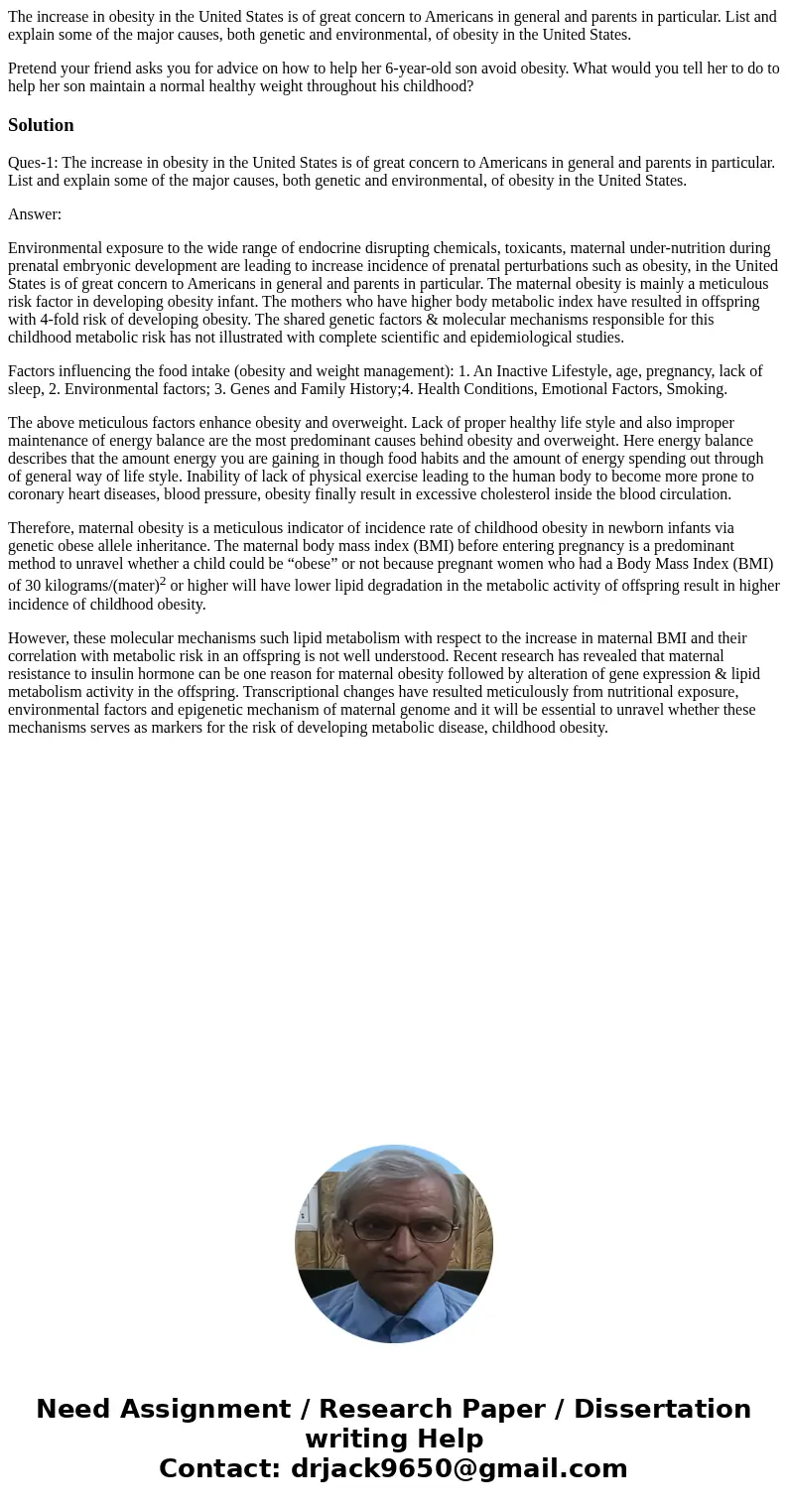The increase in obesity in the United States is of great con
The increase in obesity in the United States is of great concern to Americans in general and parents in particular. List and explain some of the major causes, both genetic and environmental, of obesity in the United States.
Pretend your friend asks you for advice on how to help her 6-year-old son avoid obesity. What would you tell her to do to help her son maintain a normal healthy weight throughout his childhood?
Solution
Ques-1: The increase in obesity in the United States is of great concern to Americans in general and parents in particular. List and explain some of the major causes, both genetic and environmental, of obesity in the United States.
Answer:
Environmental exposure to the wide range of endocrine disrupting chemicals, toxicants, maternal under-nutrition during prenatal embryonic development are leading to increase incidence of prenatal perturbations such as obesity, in the United States is of great concern to Americans in general and parents in particular. The maternal obesity is mainly a meticulous risk factor in developing obesity infant. The mothers who have higher body metabolic index have resulted in offspring with 4-fold risk of developing obesity. The shared genetic factors & molecular mechanisms responsible for this childhood metabolic risk has not illustrated with complete scientific and epidemiological studies.
Factors influencing the food intake (obesity and weight management): 1. An Inactive Lifestyle, age, pregnancy, lack of sleep, 2. Environmental factors; 3. Genes and Family History;4. Health Conditions, Emotional Factors, Smoking.
The above meticulous factors enhance obesity and overweight. Lack of proper healthy life style and also improper maintenance of energy balance are the most predominant causes behind obesity and overweight. Here energy balance describes that the amount energy you are gaining in though food habits and the amount of energy spending out through of general way of life style. Inability of lack of physical exercise leading to the human body to become more prone to coronary heart diseases, blood pressure, obesity finally result in excessive cholesterol inside the blood circulation.
Therefore, maternal obesity is a meticulous indicator of incidence rate of childhood obesity in newborn infants via genetic obese allele inheritance. The maternal body mass index (BMI) before entering pregnancy is a predominant method to unravel whether a child could be “obese” or not because pregnant women who had a Body Mass Index (BMI) of 30 kilograms/(mater)2 or higher will have lower lipid degradation in the metabolic activity of offspring result in higher incidence of childhood obesity.
However, these molecular mechanisms such lipid metabolism with respect to the increase in maternal BMI and their correlation with metabolic risk in an offspring is not well understood. Recent research has revealed that maternal resistance to insulin hormone can be one reason for maternal obesity followed by alteration of gene expression & lipid metabolism activity in the offspring. Transcriptional changes have resulted meticulously from nutritional exposure, environmental factors and epigenetic mechanism of maternal genome and it will be essential to unravel whether these mechanisms serves as markers for the risk of developing metabolic disease, childhood obesity.

 Homework Sourse
Homework Sourse